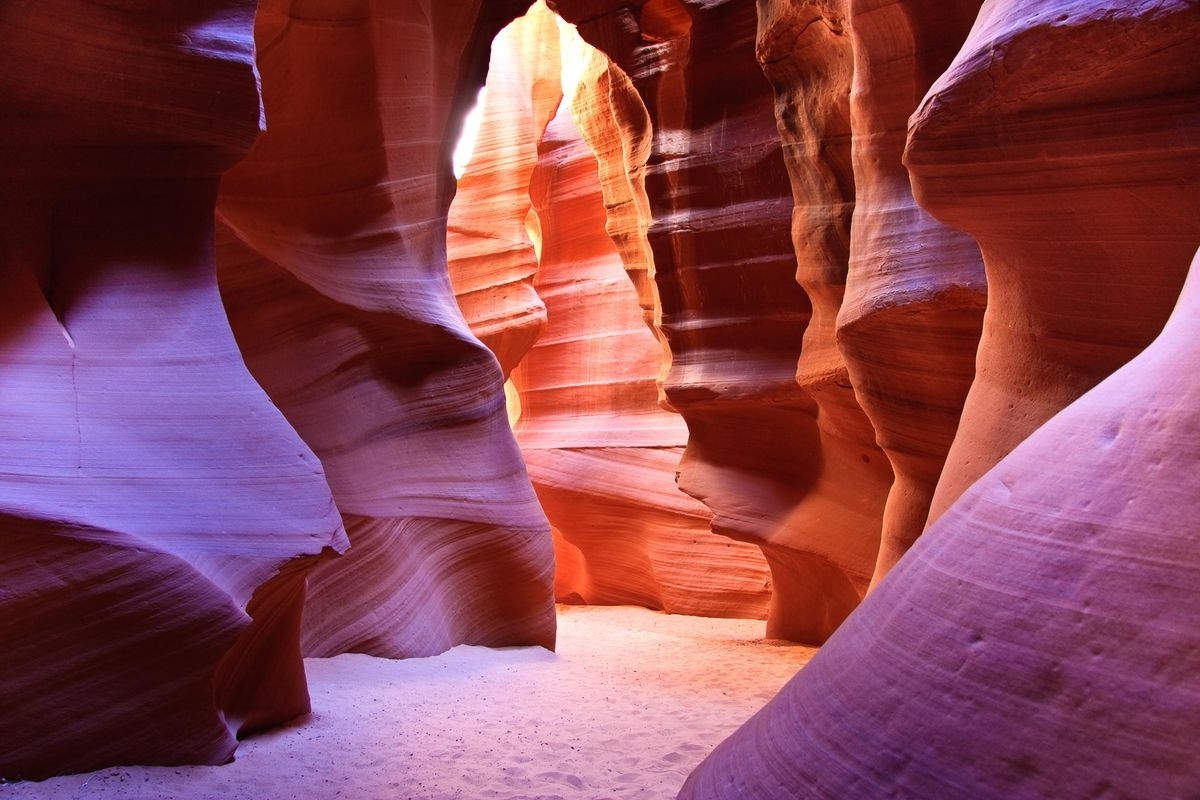Secrets Of Arizona’s Antelope Canyon Walls

Have you ever wondered what makes Antelope Canyon so special? This stunning slot canyon in Arizona is famous for its narrow passageways, vibrant colors, and unique rock formations. Formed over thousands of years by flash flooding and erosion, the canyon's walls display swirling patterns and hues that change with the light. Visitors often describe the experience as otherworldly, with beams of sunlight piercing through the narrow openings above, creating a magical atmosphere. Whether you're an avid photographer or just love nature, Antelope Canyon offers a breathtaking adventure you won't forget. Ready to learn more about this natural wonder? Let's dive in!
Secrets of Arizona's Antelope Canyon Walls
Antelope Canyon, located in Arizona, is a stunning natural wonder known for its mesmerizing sandstone formations. The canyon's walls hold many secrets, each more captivating than the last. Let's uncover some of these hidden gems.
The Formation of Antelope Canyon
The canyon's unique formations result from millions of years of erosion. Water and wind have sculpted the sandstone into the breathtaking shapes we see today.
Slot Canyon Structure: Antelope Canyon is a slot canyon, meaning it is significantly deeper than it is wide. This creates narrow passageways that twist and turn, offering a sense of adventure and mystery.
Navajo Sandstone: The walls are made of Navajo Sandstone, which gives them their characteristic reddish-orange hue. This type of sandstone is known for its fine grains and ability to form smooth, flowing shapes.
Flash Floods: Flash floods have played a crucial role in shaping the canyon. These sudden, powerful floods carve out the narrow passages and create the smooth, polished walls.
The Light Beams
One of the most magical aspects of Antelope Canyon is the light beams that filter through the narrow openings above. These beams create a surreal, almost otherworldly atmosphere.
Best Time to Visit: The best time to see the light beams is during the summer months, between 11 AM and 1 PM. During this time, the sun is directly overhead, allowing the beams to penetrate deep into the canyon.
Photographer's Paradise: The light beams make Antelope Canyon a favorite spot for photographers. The interplay of light and shadow creates stunning, dynamic images that capture the canyon's ethereal beauty.
The Colors of the Canyon
The colors of Antelope Canyon are constantly changing, depending on the time of day and the angle of the sun. This ever-shifting palette adds to the canyon's allure.
Golden Hour: The golden hour, just after sunrise or before sunset, bathes the canyon in warm, golden light. This enhances the rich reds and oranges of the sandstone, creating a magical glow.
Blue Hour: The blue hour, just before sunrise or after sunset, casts a cool, blue light over the canyon. This creates a stark contrast with the warm tones of the sandstone, highlighting the canyon's intricate textures.
The Cultural Significance
Antelope Canyon holds deep cultural significance for the Navajo people, who consider it a sacred site. Understanding this cultural context adds another layer of appreciation for the canyon.
Navajo Name: The Navajo name for Antelope Canyon is "Tsé bighánílíní," which means "the place where water runs through rocks." This name reflects the canyon's formation and its importance to the Navajo people.
Guided Tours: To visit Antelope Canyon, you must join a guided tour led by a Navajo guide. These tours provide valuable insights into the canyon's history, geology, and cultural significance.
The Wildlife
Despite its harsh environment, Antelope Canyon is home to a variety of wildlife. These creatures have adapted to the canyon's unique conditions.
Desert Bighorn Sheep: These agile animals can often be seen navigating the steep canyon walls. Their ability to climb and jump with ease is truly impressive.
Birds of Prey: Hawks and eagles are common sights in the canyon. They soar above the narrow passageways, searching for prey.
Reptiles: Lizards and snakes are well-adapted to the canyon's arid conditions. They can often be seen basking in the sun on the warm sandstone.
The Mysteries of the Canyon
Antelope Canyon is full of mysteries waiting to be uncovered. From hidden passageways to ancient fossils, there is always something new to discover.
Hidden Chambers: Some parts of the canyon are less accessible and rarely visited. These hidden chambers hold secrets that few have seen.
Ancient Fossils: The sandstone walls contain fossils of ancient marine life, providing a glimpse into the canyon's distant past.
Echoes: The narrow passageways create unique acoustics, causing sounds to echo in unexpected ways. This adds to the canyon's mysterious atmosphere.
The Magic of Antelope Canyon
Antelope Canyon's beauty is unmatched. Its sandstone walls tell stories of time, water, and wind. Walking through the narrow passages, you see nature's artistry in every curve and color. The light beams that pierce through the canyon create a magical atmosphere, making it a photographer's dream.
Visiting this natural wonder offers a unique experience. Whether you're an adventurer, a photographer, or someone who loves nature, Antelope Canyon has something special. Remember to respect the land and its history, as it holds great significance to the Navajo people.
Plan your trip, book a guided tour, and immerse yourself in the stunning beauty of Antelope Canyon. It's a place that leaves a lasting impression, reminding us of the incredible power and beauty of nature.

